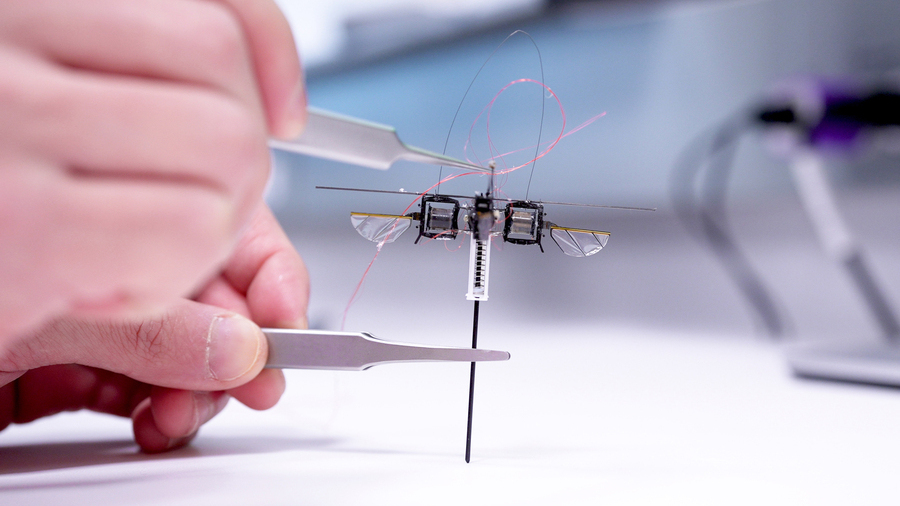MIT’s Groundbreaking One-Legged Hopping Robot: A Leap Towards Efficient Mobility
Most of us are aware that navigating the real world is no small feat for robots. They often rely on controlled environments, making movement tricky, especially for smaller units. Imagine a tiny robot trying to make its way across rugged terrain—its little wheels or legs can only take small steps. Enter MIT’s latest innovation: a one-legged hopping robot equipped with four insect-like wings. This remarkable creation can bounce its way across various surfaces with surprising agility.
The four wings provide lift and ensure the robot lands precisely on its single leg.
How It Works
While these wings might not allow the robot to take flight in the traditional sense, they do provide essential lift and assist in steering, allowing for precise landings. Earlier versions of one-legged hopping robots used propellers and electric motors, but those are impractical for a device weighing less than a paperclip.
Currently, the winged hopper isn’t fully self-contained; its power and control systems are operated off-board. However, using it in a tethered setup enables researchers to explore different efficient movement strategies—efficiency is the name of the game here.
Why It Matters
In a world where tiny flying drones are becoming common, this innovative hopping machine offers an exciting alternative for those looking to minimize costs, power usage, and weight. Impressively, it can even handle tiny payloads—up to ten times its own weight! This capability opens doors for practical applications, even in niches that require lightweight, agile robots.
Watch It in Action
Curious about how this little marvel performs? Check out the video embedded below. And while you’re at it, let’s not forget that the inventive locomotion seen in hopping robots isn’t the only exciting trend. There are also remarkable developments in tiny robots with explosive joints—a concept as wild as it sounds!
The AI Buzz Hub team is excited to see where these breakthroughs take us. Want to stay in the loop on all things AI? Subscribe to our newsletter or share this article with your fellow enthusiasts.




